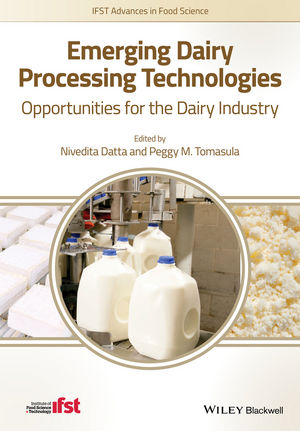Look to dairy for calcium and vitamin D
Dairy calcium is highly bioavailable and works synergistically with vitamin D and other nutrients to build healthy bones. Adding probiotics may increase bioavailability

A few years back, my family physician recommended that I be tested for bone mineral density and start taking a calcium supplement. I explained that I got my calcium from dairy and had great bones. But he insisted that I couldn’t possibly get enough calcium from dairy products, and if I tried, I would be very overweight.
Lab tests revealed that I had both healthy bones and a healthy weight, so I stuck with dairy foods and skipped the supplement.
Nutrients for healthy bones
Our bodies need more than calcium to create healthy bones. According to American Bone Health, https://tinyurl.com/yck966uo, calcium, vitamin D and magnesium are key bone health nutrients, and there’s good evidence that phosphorus, potassium and vitamin A are also important.
Three servings of dairy provide more than 70% of the daily requirement for calcium. I love kale, but would need to consume 38 cups to get the same amount of calcium (https://tinyurl.com/ycksdrzl).
Dairy also provides significant amounts of the other nutrients essential for healthy bones. Three servings of low-fat milk deliver 45% of the Daily Value (DV) for vitamin D, 25% of magnesium, 60% of phosphorus, 23% of potassium and 45% of vitamin A.
Shortfalls of calcium supplements
Surveys show that approximately 60% of women over the age of 60 take a calcium supplement. But calcium supplements have health risks, including raising the risk of renal stones. The U.S. Preventive Services Task Force concludes that the current evidence is insufficient to assess the balance of the benefits and harms of combined vitamin D and calcium supplementation for the primary prevention of fractures in premenopausal women or in men (https://tinyurl.com/ybooyyex).
The same task force recommends against daily supplementation with 400 International Units or less of vitamin D3 and 1,000 milligrams or less of calcium for the primary prevention of fractures in noninstitutionalized postmenopausal women.
Plant-based milks are often fortified with calcium and vitamin D. But calcium ingredients may precipitate and be lost to the consumer if the consumer doesn’t shake the carton. Moreover, spinach and other green veggies may contain oxalates and phytates, which bind to calcium to form complexes the body can’t use.
Two components of dairy, vitamin D and lactose, contribute to calcium absorption.
Probiotics increase bioavailability
Older women often avoid dairy because of some degree of lactose intolerance, but yogurt and hard cheeses are more readily tolerated by this population. A study by Aljewicz et al. showed that use of the probiotic culture Lactobacillus rhamnosus HN001 increased the bioavailability of calcium, magnesium, potassium and phosphorus in cheese and cheese-like products.
Another study by Parvaneh et al. showed that a specific probiotic, Bifidobacterium longum, actually increased bone mass density in ovariectomized rats. Adding this probiotic as a supplement increased bone formation, decreased bone resorption and changed the microstructure of
the femur.
Another study, by Klobukowski from Poland, revealed that adding cereal to milk or yogurt significantly diminished the quantity of calcium released during digestion. One of the mechanisms by which probiotics act is by producing phytase enzyme to overcome mineral absorption depression by phytate. Consuming probiotics in dairy foods might be a good strategy to ward of postmenopausal osteoporosis.
Building healthy bones starts at youth. According to the National Institute of Health, as much as 90% of peak bone mass is acquired by age 18 in girls and by age 20 in boys (https://tinyurl.com/ybu4em6g). Along with the nutrients found naturally in dairy, weight-bearing exercise is critical to building healthy bones
Looking for a reprint of this article?
From high-res PDFs to custom plaques, order your copy today!







